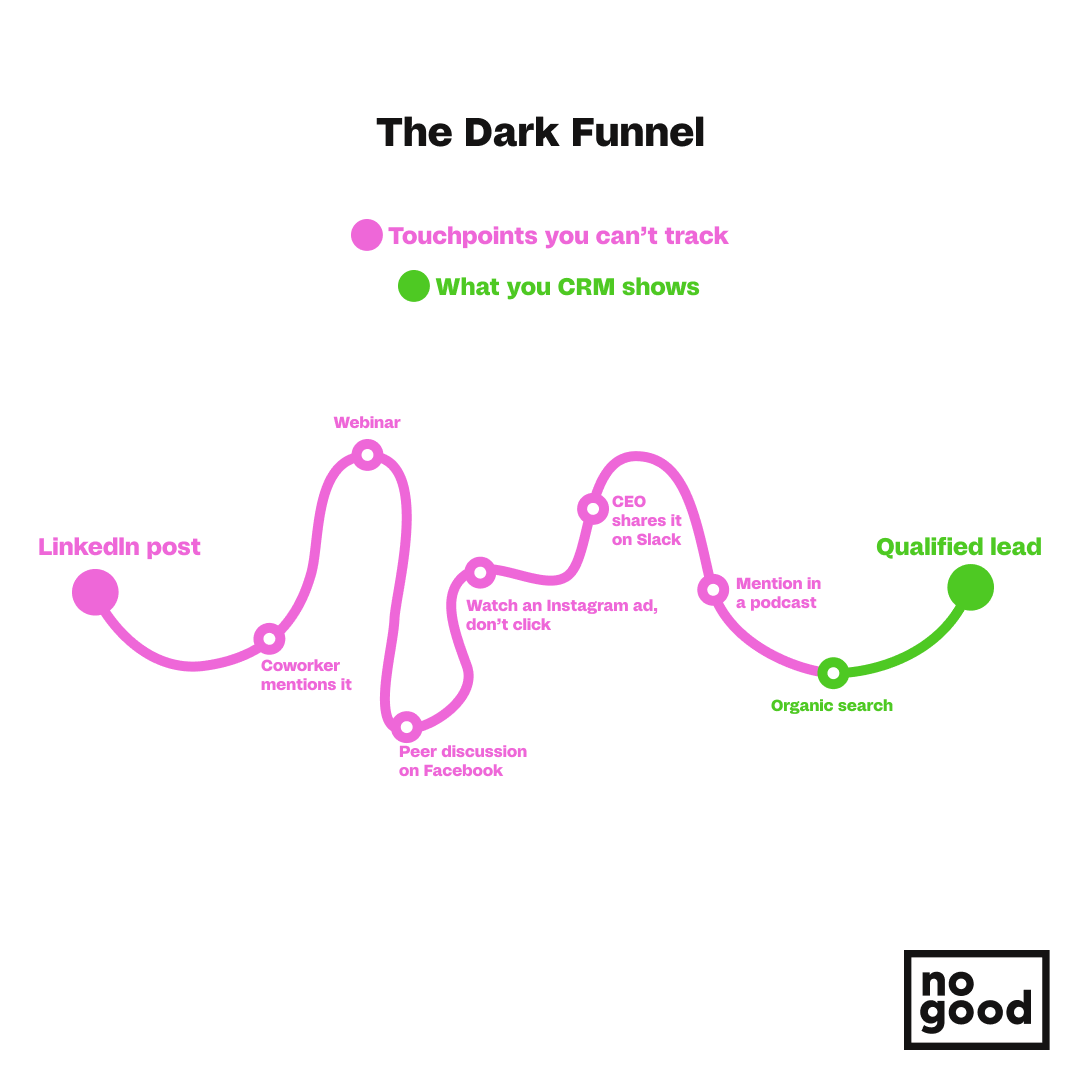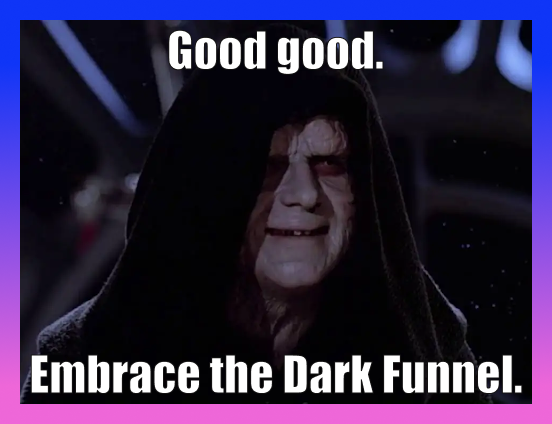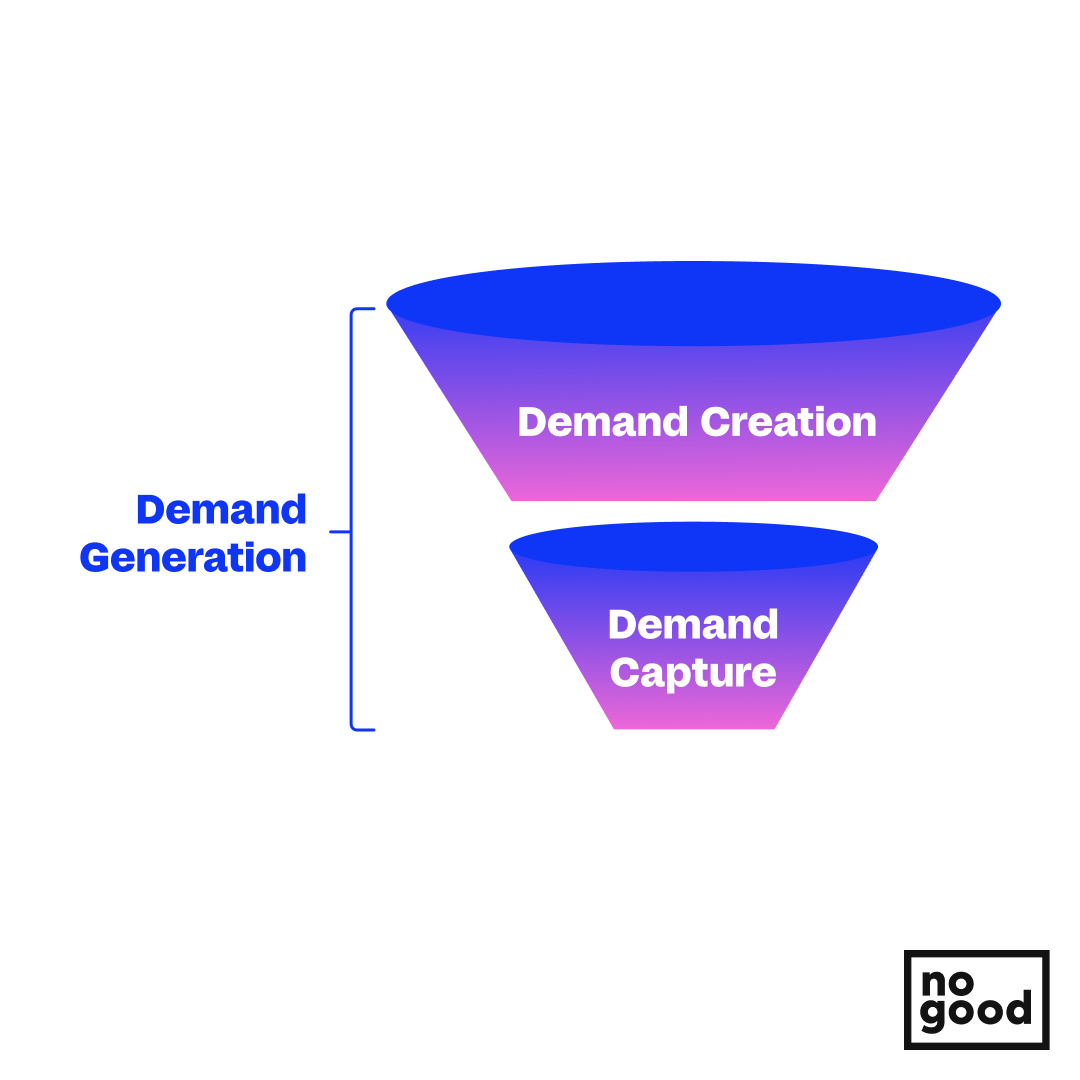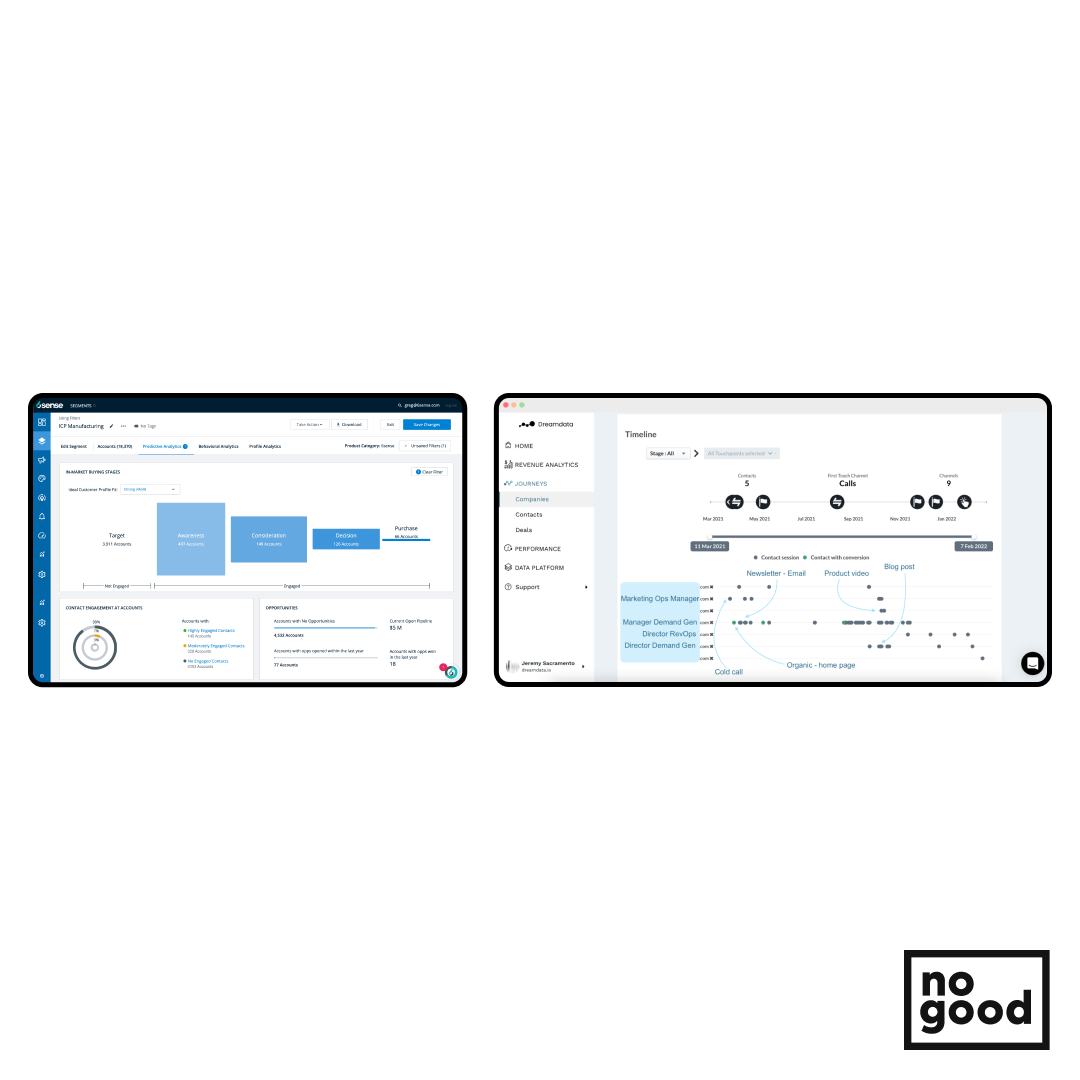The internet is a vast space that is constantly evolving. As it changes – so do the ways in how we go about doing many day-to-day things in our lives, sometimes without us even realizing it. With these shifts in recent years, especially in the past two years with the push of going to a more digitized world, it would only be natural that the way people make buying decisions and navigate the traditional sales funnel would change as well.
This new shift in the buying process is something that has confused a lot of people in the B2B and B2C space as the customer journey has gone from being straightforward to more mysterious and elaborate. A few places such as 6Sense have dubbed this change in the buying process the “Dark Funnel” even going as far as claiming to have created the term. But what exactly is this “Dark Funnel” and how can companies adapt to this change is something I’ll lay out in the next few sections.
TL;DR:
- Defining dark funnels
- How dark funnels differ from traditional marketing funnels
- How to adapt to the dark funnel journey
- Technology to help adapt to the new journey
What Exactly is the Dark Funnel anyways?
Simply put, the Dark Funnel consists of various touchpoints of a customer’s buying journey that aren’t able to be easily tracked by attribution software — or at all. Many of these dark parts of the buying journey are where prospects are making some of the most important decisions on product and brand sentiment to see if it fits their needs, and whether or not to convert. The number of people who are taking dark pathways on their buying has drastically accelerated over the past two years with the pandemic and the push to a more hybrid work model, but the notion of a dark funnel has been around for longer.
In a 2017 blog post by Forrester Research, it was noted that 74% of survey respondents mentioned they did over half of their research online before buying a product. In years prior to this shift, people were getting information to influence their B2B buying decisions either through trade shows, industry conferences, analyst firms, or Google — with many interactions happening directly with sales reps that would help educate the buyer directly and move them through the funnel. Even dating back as far as 2014, an IDC whitepaper concluded that 75% of B2B buyers and 84% of C-level executives used social media in some capacity to make a buying decision.
Now in the current era, a lot of potential customers in the B2B space are getting their information from the various channels that have sprung up over the past few years; some of these include organic social media content (think LinkedIn), review sites (like G2), blogs, podcasts, vlogs, online groups/chats, webinars, and their peers.
Due to the way many of these platforms are structured, it’s impossible to attribute how a view of a LinkedIn post could have possibly been a major step in your most recent large-scale closing, or why there was a customer who seemingly came out of nowhere and converted by Googling your site. From the perspective of a data-driven marketer standpoint, this may cause both frustration and confusion, as many marketers have been conditioned to expect to be able to track every point along the customer journey.
What could a buyer’s journey through the dark funnel look like?
- Customer finds a post about B2B service on a subreddit shared by SMM
- Customer takes no action
- Customers colleague shares Zoom Webinar talking about B2B service features
- Customer finds the company on LinkedIn after watching the webinar
- Customer is targeted through social media campaigns
- Customer seeks out website and socials but doesn’t follow
- Buyer joins B2B Facebook Group to discuss the product
- Customer makes a recommendation based on feedback
- Customer’s manager sets up demo-call after recommendation
- Customer’s manager books a 12-month contract
As you could see, the majority of the buyer’s journey was untraceable, and the only bits that the company would be able to track would be the SEM ad that went right to the demo page and the sales call, if you went by just what tracking could tell you it would have seemed like that buyer came out of left field.
The Dark Funnel & How It Differs From A Standard Marketing Funnel
As marketers or salespeople, we have been educated on the basic, linear path that a potential customer takes on the buying journey. These are divided into four major phases of funnel marketing where a prospect moves from being aware, to being interested in a brand, developing a desire to purchase, and finally taking an action or converting — or as some may simply hash it up as Top, Middle, and Bottom of the funnel. The dark funnel’s shift in marketing and sales doesn’t completely destroy this notion, though the buying journey does become far less linear and not as easy to decipher.

How to Adapt to the Dark Funnel
The best way to adapt to this blind data realm is to embrace the dark funnel and step into the darkness – yes embrace the dark side – for all you Star Wars fans out there.

This can be done by taking an approach of dividing marketing strategy into two broad categories: demand creation and demand capture.
Creating demand is exactly as the name implies you are generating demand for a product. This is the process of reaching out to your audience that may not know you exist. By creating demand, you are venturing out into these dark channels and creating content that can be both educational and valuable to your target audience. With that content, they become aware of your product and can make informed decisions to decide if it fits their needs to ultimately convert. But it takes a bit more than just going out and flooding every social channel with content about your product.

Demand creation involves a strategic approach based on research of your target market. This would allow you to decide which channels are the most frequented by your target market and are the most effective to execute in – which may take some time and research. It also will involve figuring out what your target market’s needs and pain points are so you can present your product properly as a potential solution, which is the key element of demand generation. In some instances, it may involve hiring someone that is a subject matter expert to create content that resonates with your target audience. In addition to content marketing, other forms of demand generation include online or in-person events, case studies, videos, or offering a free trial for a SaaS company’s services.
An effective demand creation strategy is key to succeeding in the dark funnel as there is only so much demand and awareness out there – with some estimates that only 3 to 5% of your total addressable market (TAM) are in the market to buy, you have to consistently be generating demand or you will run out of demand to capture.
The other half of this strategy is demand capture. This involves developing a marketing strategy to reach out to prospective customers who already are aware of your product and have some idea of how it is beneficial to them. They are further down the funnel and usually can be nurtured and moved to the conversion point. Most of the common methods of demand capture usually involve an SEM strategy through Google or Bing as they are seen as the primary places people go to look for a product when they are aware of it. In addition to SEM, utilizing remarketing/retargeting can be helpful to show appropriate ads to potential customers as they move through the funnel and interact with your site or content.
Both demand creation and demand capture rely on each other for success, it is important to assess your current potential market to determine how much emphasis should be placed on creating demand vs capturing existing demand. Usually, the larger and more well-known a brand is, the less marketers will have to rely on creating demand, and the more they would have to focus on capturing existing demand. Whereas newer or smaller brands might want a larger emphasis on generating demand.
Technology’s Role in Decoding the Dark Funnel
While the exact pathway in the Dark Funnel is very difficult to track directly, there are several tools and strategies out there that can provide some insight into the buyer’s journey. Sites such as Google Analytics, Ahrefs, and SEMRush can provide third-party data, but with the upcoming demise of tracking cookies, these platforms may shift dramatically in their functionality.
Google Analytics can provide insight into dark funnel activities by looking at variations in direct traffic going to your site. If specific posts or pages (particularly longer URLs) are getting significantly more traffic than others it can be a definite indication that the content is being shared on dark channels.
SEMRush’s keyword magic tool can be utilized to find keywords to be used for content creation on-site and maybe find new topics to discuss to create demand. The same process is also possible with Ahrefs – their software can be useful as well for researching keywords and finding out questions people may be asking that be the basis for content creation, not just on blog posts on site, but in other mediums as well.

Other tools such as Dreamdata have sprung up to help decode the user buying journey and map it out as best as possible by mixing in input from users, such as including input from user feedback in its revenue attribution modeling platform. Another is 6Sense which is known for providing historic intent data mixed with artificial intelligence to create hypothetical models of customer journeys and determine which phase of the buying process an account can be in. Both of these revenue attribution programs can be useful to figure out which aspects of the buyer journey are the most effective in addition to modeling out buyer journeys.
While software can help provide some insights into the buyer’s journey, it’s important to note that the smartest software on the market cannot interpret everything along the buyer’s journey and still has limitations in tracking. Because of this, there is an increase in the presence of businesses and their representatives in dark places interacting directly with their potential customers. Some examples of this could be marketing managers or even company executives’ active presence in SubReddits, Discord channels, and private Facebook groups contributing to the conversation by either distributing relevant content or answering the questions potential clients may have to help move them through the sales funnel. Getting to know your customers may be the best way to understand their journey through the untrackable areas and also gauge consumer sentiment and buyer readiness.
We know that the realm of the Dark Funnel contains tons of untraceable touchpoints in the customer journey and it may be hard to figure out what channel could be driving the best results. Sometimes a simple and overlooked tactic can be beneficial to help understand the buyer’s journey. Enter self-reported attribution, just a simple blank text field that asks “Where did you hear about us?” which can be used in conjunction with other tools to give some insight as to which channels are the most effective at creating demand, according to Refine Labs CEO, Chris Walker. However, it’s important not to treat it as a silver bullet, as some people may not even have a totally accurate recollection of when they first came across your brand initially, these were noted in a blog post/case study done by DreamData regarding self-reported attribution. Still, conversing with your customers directly or getting direct input from them can be one more tool for figuring out the buyer’s journey.
Conclusion
The dark funnel is a byproduct of the shift in the way we use the internet – as the internet continues to change new social interaction platforms will pop up while others will become obsolete. With that, the buyer journey will also continue to change as well and we will deviate farther from the easily trackable and predictable linear buying path that used to dominate. As marketers it’s important to pay attention to these shifts as best we can. We cannot afford to try to ignore the increase of dark channels and the dark funnel, but we can benefit greatly from developing a strategy and embracing them.





